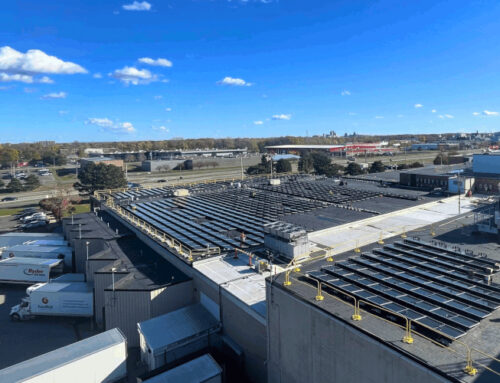Year of the Environment’s Sustainability Summit: Popping the Conservation Bubble
November 18, 2025
Friday, Nov. 14, the Sustainability Summit marked the culmination of the College of William and Mary’s Year of the Environment 2025 efforts.
The summit showcases the Year of the Environment’s push for a greener, more environmentally conscious campus. Executive Director for the Institute for Integrative Conservation Robert Rose spoke about the College’s intentions with this event.
“We have professors and students and staff all across campus working in this environmental area and the Year of the Environment Sustainability Summit, which is part of that to shed light on how much is going on and what our ecosystem looks like, so students can have more of an opportunity to figure out what they might want to work on,” he said.
One aspect of the College’s sustainability work, the Green Fee Fund, is a way students give back to the natural environment of Williamsburg. Established in 2008 and now having funded over 1.5 million dollars of sustainability projects, the Green Fee is a small fee that all students pay as part of their tuition, which then circles back and funds student-led projects.
Event Planning Communications Outreach for the Committee on Sustainability Madeleine Fernandez ’28, emphasized the impacts of this initiative.
“The Green Fee is such an incredible outlet for the entire community to showcase what they’re passionate about with the environment, what they’re motivated to do,” Fernandez said.
The Green Fee is what has allowed the Year of the Environment to be so student-led. Those who are looking to have an impact need only to submit an application for their proposal and then be given the resources to make change happen.
The Sustainability Summit highlighted these projects, some of which include the investment in electric lawnmowers, the cataloguing of local entomology on and around campus, and centralized composting programs.
Geology major Alex Stevenson ’27 explained that the Green Fee organization was a celebrated aspect of the summit, something that the conservation teams on campus are trying to publicize even more.
“The [Sustainability Summit] is a great event to encourage more people to apply and to come up with their own ideas about what you think [the Green Fee] could best be put towards because the committee that approves them wants things that have a social impact, environmental impact, and that have student involvement.”
Harriet Ramasamy ’27, lead intern for Dining Sustainability, got involved with Dining Sustainability her sophomore year after hearing about some of the projects and deciding she wanted to start sustainability initiatives of her own. She shared her individual impact as an intern.
“Just reflecting on the projects that we’ve done recently and what was made because this is the symposium and it has made me very grateful for the money that we’ve been able to use for our programs and the changes that we’ve been able to make, so it’s honestly a nice experience to see like all the change that we actually made as a group,” Ramasamy said.
At the summit, they showcased the multitude of projects they have been responsible for this year: the campus compost program, providing greener food options at events, recycling systems in Zable Stadium and more.
One of the most monumental celebrations of the Year of The Environment is the establishment of the Batten School of Coastal and Marine Science at the College. Founded in July of 2024, the school is now finding itself central to the Virginia Institute of Marine Science, one of the largest marine science centers in the United States. The Sustainability Summit is the second part of the Year of the Environment’s hosted public outreach events. The first part was the spring Sustainability Symposium from last semester. This second event allowed the team to zero in on engagement even further than before. Throughout the year, both students and faculty working in practically every capacity of the Year of the Environment have had one overarching goal beyond simply sustainability: connection to the broader community.
Stevenson reflected on the motives of the Year of the Environment and the IIC.
“They want things that have a social impact, that have an environmental impact, and that have student involvement, especially,” they said. “So if they can show that it’s doing all three of those things and that this money isn’t just going to [be wasted] or something like that. For example, the compost bins, you know, it’s especially important to show that, but that’s definitely something that’s a really good thing to have.”
The idea of a conservation bubble was discussed widely across the entire event, with volunteers, student interns, faculty and speakers, with the collective resolution that the key to the future of environmentalism is in tapping into the mainstream culture beyond those specifically in conservation fields.
Rose acknowledged the wide scope of the issues they are seeking to tackle, while noting the approachability of their program.
“One person can make a difference, and I think the sustainability summit really does a good job of highlighting the fact,” he said. “They have a vegetarian meal that makes a difference because it’s a low animal protein meal that kind of stuff makes a difference, and so to be able to come here and see what is happening and know the activities that make it a big difference, they kind of add up. So don’t get overwhelmed by environmental issues, just find something to get connected to and go from there.”
The sustainability summit might represent the winding down of the Year of the Environment, but the environmentalists are just getting started. Rose was adamant that the Year of the Environment shows that one person can make a difference, and that person can be anyone.
“If you want to be part of the solution, there are so many opportunities on campus to get involved,” he said. “Find one of those pathways, or compost club, the sustainability group — there’s a whole bunch of different opportunities that are involved with the institute, and plenty of opportunities to get involved with research. You know, if you’re a data science student, we have ways to get you involved, so no matter what your interests or backgrounds are there is a pathway to work on our environment.”
Related Post




